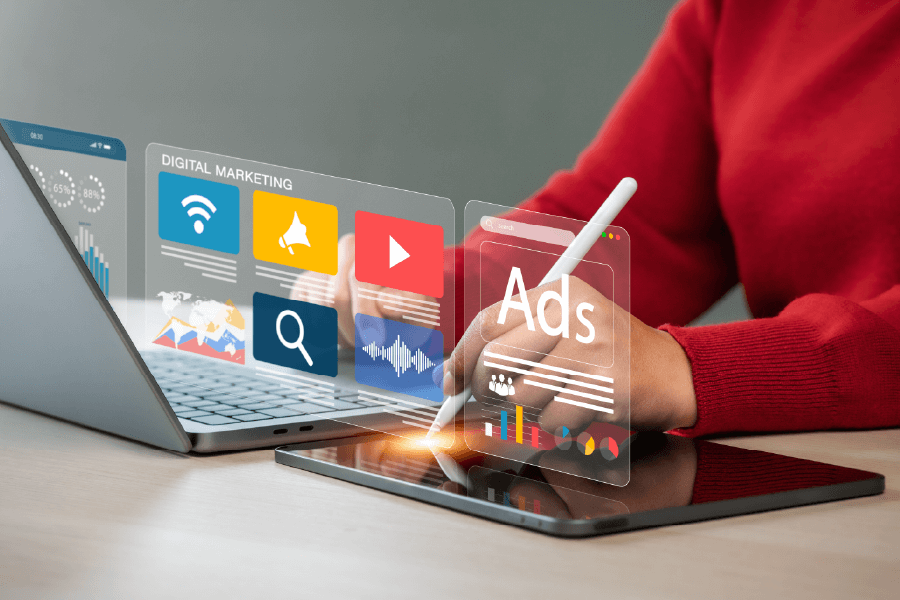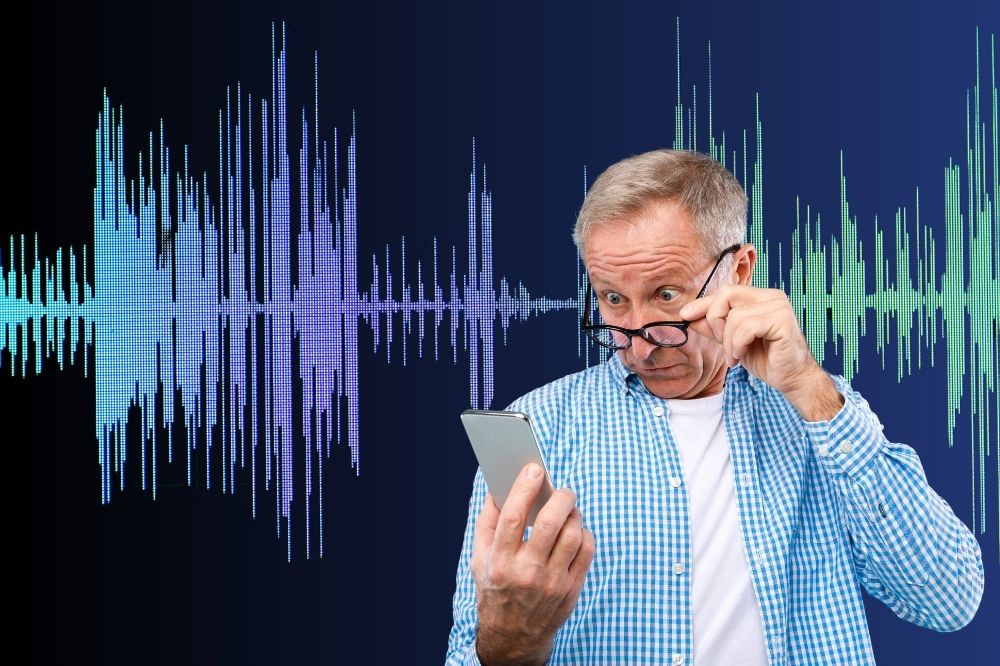Google Ads AI in 2024 and how to use it
Google rolled out many new AI functions in 2024. As a Google Ads professional and Google Ads user, you should be familiar with these new AI functions – and use them. Particularly helpful: the free Google Ads AI checklist at the end of this blog post.
1) Google Ads AI in the search network & display
- New: Google has introduced “AI Overviews in Search” in the USA (other countries to follow). AI Overviews are displayed in the search results if they are particularly helpful and go beyond what the search offers today. As advertisers, we naturally want to land in these ad spaces!
- Google has already announced a planned feature in Google Search that will help people make complex purchasing decisions. Example: People are renovating their house and search for “short term storage”. Clicking on a storage ad could create a wow effect by helping AI to identify specific needs. By providing details such as furniture photos and budget, Google AI could recommend the appropriate storage size and packing materials and provide a direct link to the rental on the website. We are excited!
Google display and search network
- The function for writing Google Ads texts with AI has been around for a while.
- The combination of ad title, description and assets in responsive search ads, smart bidding and recommendations are AI functions that we have been using for some time.
2) Generative AI in Performance Max campaigns
- We’re excited about the many AI features for creating assets with Gemini (Google’s most powerful AI model) in Performance Max:
- the artificial intelligence generates more recommendations and creative ideas: Google pulls these asset suggestions from your website, asset library and stock images
- New image editing functions: Add objects, extend backgrounds and flexibly customize images to any format, size and orientation
- Google presents products in different contexts and scenarios, e.g. lifestyle images showing people in action or backgrounds with people (coming soon: when Google updates image generation models to Imagen 2)
- Merchants can also highlight their products in their Google Merchant Center feeds
- Integration of creative assets from Canva (there will be a Canva integration app)
- Generation of long headlines and sitelinks (coming soon)
- Preview link of ads from Performance Max that can be checked by anyone – even if they don’t have a Google Ads login
Good to know: Advertisers cannot use Performance Max or asset generation to create content that promotes violence, misrepresentation or other content prohibited by our long-standing Google Ads policies and guidelines on the use of generative AI.”
You want to get started right away and create more asset groups for Performance Max campaigns with generative AI?
Here's how.3) Generative AI in shopping ads
Hopefully they will be here soon, the shopping ads with immersive visual effects such as virtual fitting rooms and generated 3D ads.
Google promises many features that will allow users to dive deeper into an ad to see product videos, summaries and similar products from the advertiser.
4) Demand Gen campaigns with Google Ads AI
Google is currently pushing video ads as Demand Gen campaigns (playout via YouTube, YouTube Shorts, Discover, Gmail).
Google AI understands customer intent thanks to its big data collection. There are new formats and functions such as vertical ad formats, ad stickers with calls to action and animated image ads that are automatically generated from the images in the Demand Gen ad accounts and product feeds.
5) Google Ads Data Manager and real-time indicator Ad Strength
While all of these innovations are useful, the performance of AI depends heavily on the quality of the data. Companies need a solid measurement strategy based on first-party data to get the most out of AI. Many companies have data from various sources such as conversion data, email lists and surveys. Bringing this data together used to be very complex, especially for smaller companies. With Google Ads Data Manager now available to all, this process is greatly simplified. Advertisers can now merge, use, analyze and activate all first-party data sources in one place – a process that used to take weeks or months is now done in minutes. To the Google Ads Data Manager
The real-time Ad Strength indicator provides feedback on ad strength in terms of the diversity and relevance of your assets. Generative AI makes it easier than ever to improve your asset mix.
6) Use cases for Google AI in Google Ads:
- Zooplus scales customer acquisition with Google AI and Performance Max: https://www.thinkwithgoogle.com/intl/de-de/marketing-strategien/automatisierung/google-ai-und-performance-max-zooplus/
- Home24 improves reach and performance of shopping ads with FeedGen: https://www.thinkwithgoogle.com/intl/de-de/marketing-strategien/automatisierung/home24-feedgen-shopping-ads/
- AI strategy of the vacation rental platform HomeToGo: https://www.thinkwithgoogle.com/intl/de-de/marketing-strategien/automatisierung/ki-strategie-hometogo/
- Advertise your own top products with AI: MediaMarktSaturn does it: https://www.thinkwithgoogle.com/intl/de-de/marketing-strategien/automatisierung/mediamarktsaturn-cdp/
- L’Oréal’s recipe for success for the rapid integration of Google AI: https://www.thinkwithgoogle.com/intl/de-de/marketing-strategien/automatisierung/google-ai-loreal/
There are also already statements on efficiency gains. For example, the online platform Event Tickets Center, which tested asset generation in Performance Max, stated that they accelerated their creative production by a factor of 5!
Conclusion
Google Ads uses generative AI to automatically create and optimize ad content. This makes it incredibly efficient and targeted, e.g. through text, images and videos that are tailored to the interests and behavior of the target audience. Through machine learning, the AI analyzes historical data and recognizes patterns to create the most relevant content. It adjusts ads in real time to maximize performance and increase ROI. It also enables A/B testing and continuous optimization, allowing advertisers to run effective campaigns with minimal effort. The generative AI of Google Ads thus ensures personalized, creative and effective advertising.
Advertisers should use Google’s AI for advertising as it enables precise targeting and personalized ads. AI analyzes vast amounts of data to understand user behavior and preferences, making ads more relevant and effective. Through machine learning, AI optimizes campaigns in real time, reduces costs and maximizes ROI. It also provides insights into market trends and competitor activity. Automated processes save time and resources, while detailed reports and analyses support strategy development. Overall, Google’s AI significantly increases the efficiency, accuracy and effectiveness of advertising campaigns.
Advertisers are best advised to use this Google Ads AI checklist to check whether they know and use all the functions: Google Support Pages Checklist
Sources
- https://blog.google/products/ads-commerce/gemini-models-are-coming-to-performance-max/
- https://blog.google/products/search/generative-ai-google-search-may-2024/
- https://blog.google/products/shopping/google-generative-ai-marketing-features-may-2024/
- https://www.thinkwithgoogle.com/intl/de-de/marketing-strategien/automatisierung/innovationen-generative-ki-marketing/




